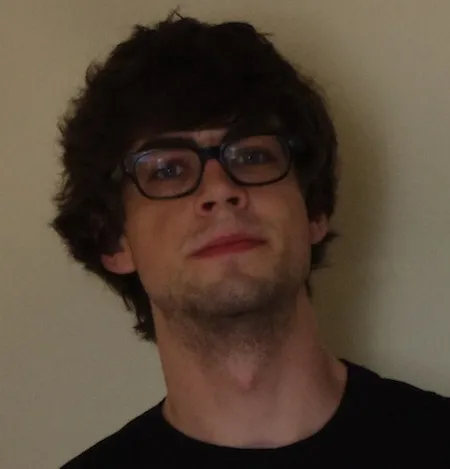Capstone Final Projects

Film and Media Studies Capstone Final Projects
'Materialize' on Campus in Object Obscura Show
Nate Blum
May 15, Swarthmore, PA --
As the finals season wound down, students and faculty enjoyed breaks from Sharples with the annual department picnics and barbeques. This was no different with the Film and Media Studies Department, which held its barbeque in the Kohlberg courtyard on the fifteenth. But as students and professors feasted on ribs, burgers, and potato salad, there was a buzz in the air. The seniors, now taking advantage of one of their last opportunities for department-provided free food, had earlier spent the day laying down cable, wiring devices, preparing pedestals, and putting the finishing touches on their final projects for the evening's main event: Object Obscura.
Object Obscura, a campus-wide exhibition of final projects for the Film and Media Studies Capstone taught by Profs. Erica Cho, Bob Rehak and Patricia White, presented a culmination of that class's semester-long investigation of the materiality of the moving image. Having studied props, sets, cameras, celluloid, presentation, curation, and much more, the students were asked to conceive of and realize a physical object from the world of film, television, or the moving image in general. Object Obscura featured sculptures, films, toys, interactive experiences, mixed-media installations and even delicious homemade cookies. The students were asked to contextualize their objects as they saw fit, so their projects could be found all over campus, from Kohlberg and LPAC to Old Tarble.
The Language Resource Center in Kohlberg became the hub of the show, featuring most of the film-based and digital projects. As the department barbeque came to a close and the exhibition began, Film and Media Studies students and curious students and faculty made their way up to the LRC, where they could watch the student films and experience interactive digital projects. Lisa Yelsey provided the dessert with a tray of cookies to accompany her film on cooking. Jake Carter, exploring digital and analog musical media, provided the tunes for those curious enough to try on the headphones he provided. Though, from the opposite corner, one could not help but hear the infectiously saccharine "Brony" music coming from Julia Tallarico's film exploring My Little Pony fan subcultures. Soomin Kim flipped expectations, projecting light through the back of an empty television set, creating a shadow cityscape. Janessa Esquivel's ɛləfənt delved into the world of memory with a memory box and accompanying film, while Fernando Macondo also examined memory and loss with a film and apparent suicide note. Ted Johnson hypnotized the attendees with a mysterious QR code linking to a "brainwashing video." Pete Haury, too, asked the audience to participate in his project, allowing them to choose the fate of a "sim" from the popular videogame The Sims.
Stomachs were full with homemade cookies, but people were still hungry for more Object Obscura. Elsewhere in Kohlberg, they could find Dylan Jensen's conspiracy board (keep an eye on that one), and Rebecca Contreras's dream-like film based on the works of Hans Christian Andersen. Upstairs, if one was brave enough to venture, Meryl Sands had installed her own physical/digital memory box within the mysterious "Panopticon Room" at the top of Kohlberg.
As much as the Film and Media Department loves Kohlberg, there was more Object Obscura to be seen. Across the path in LPAC, the attendees found a canvas bag with a dollar sign on it, straight out of Looney Toons, made by Nate Blum. Those pondering the actual contents of the bag probably heard the faint voice of Lil' Kim. That was Stephanie Fortune's film playing in the cinema, which commented on skin color and Barbie dolls and featured Stephanie's homemade "black Barbie." Outside the Lang Concert Hall were two interesting exercises in presentation. Brian Huser created a miniature "drive-thru" in his car, allowing people to experience a road-trip from the comfort of Swarthmore. Behind the building, Sara Kim projected a sunset through a mesh curtain. Finally, the actual sun began to set on Object Obscura, and everyone made their way down to Old Tarble to find Liam Epstein's rocketship, a model and notes from a long-forgotten Sci-Fi film.
As dark nighttime came over the Swarthmore campus, Object Obscura came to a close. Like any good Swarthmore event, everyone left with minds full and stomachs full. The projectors have been shut down. The objects have been taken home. But if Object Obscura taught us anything, it is that the show, like the films that inspired it, will leave an indelible mark even now after it is over.


